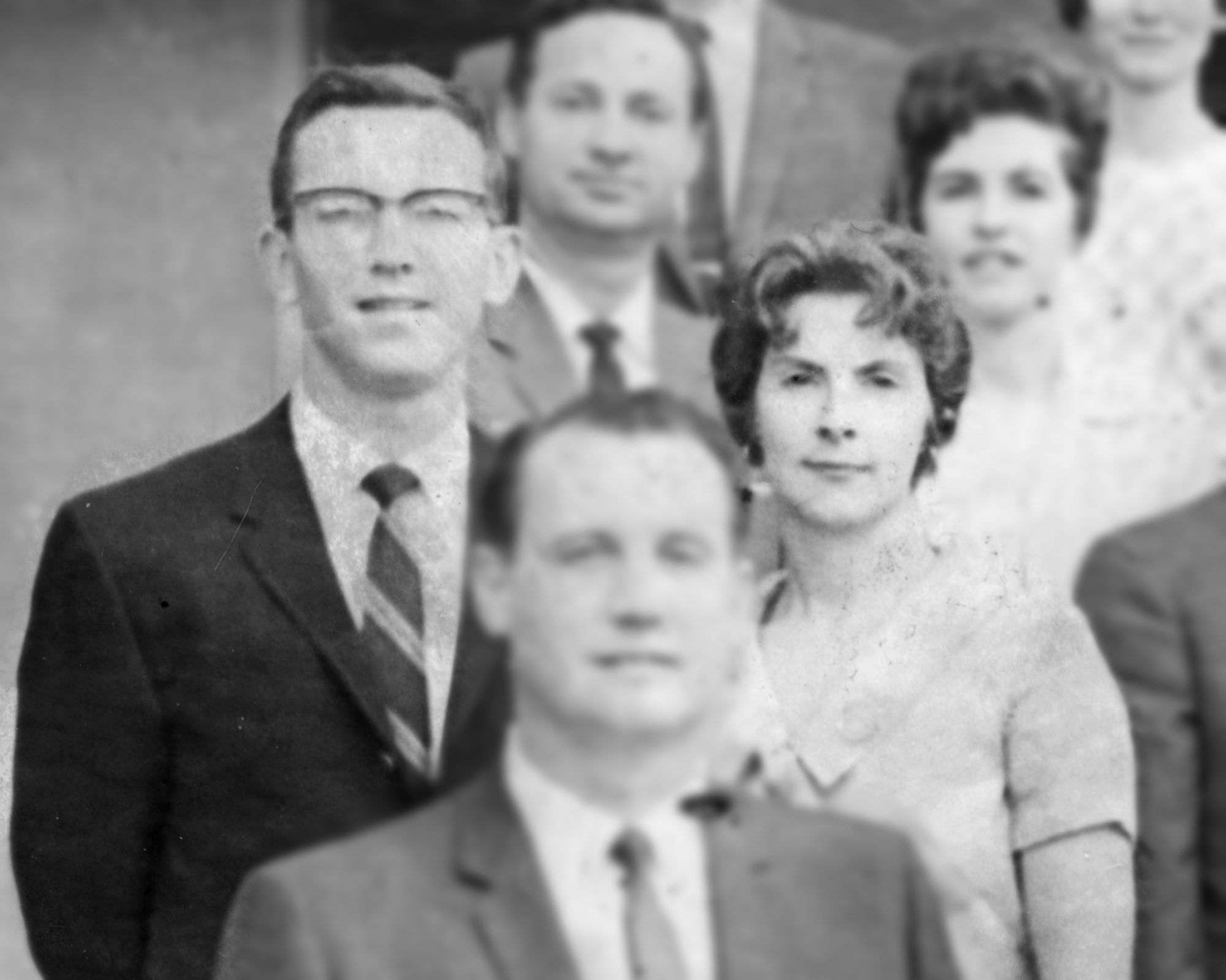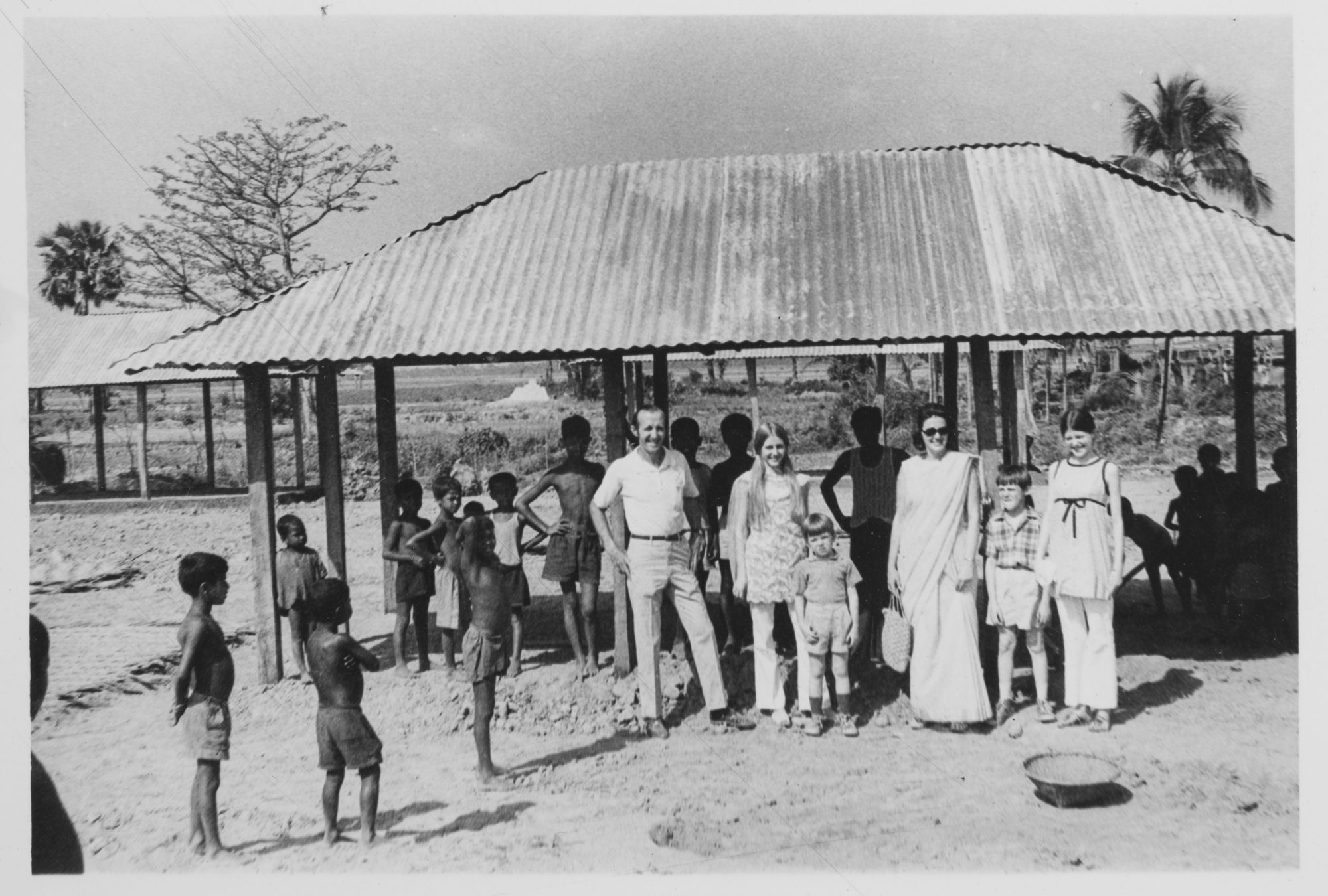1970s
As teams of laymen ministered after natural disasters, including a hurricane and an earthquake, Southern Baptists cemented their belief that gospel proclamation and gospel demonstration work hand in hand.
The 1970s witnessed the culmination of the Program of Advance, which started in the 1940s. Though executive leader M. Theron Rankin launched the program, his successor Baker James Cauthen brought it to greater fruition. During an unparalleled season of growth from 1945 to 1979, the number of Foreign Mission Board missionaries increased from 504 to 3,010 missionaries, the annual income grew from $2.8 million to $70.1 million, and missionary presence expanded from 15 to 80 countries.
One of these missionaries, Sam James, experienced unexpected response to the gospel as he taught theological education classes in Vietnamese villages. Non-Christians attended in record numbers, and, after hearing the gospel, proclaimed faith in Christ. Some stayed up all night to study the Word. At that time Communist forces started taking over the countryside, and James realized the Holy Spirit was preparing the Vietnamese for “the deepest crisis of their lives.”
The 1970s witnessed unprecedented humanitarian aid efforts as Southern Baptists ministered in times of disaster. Missionaries had compassionately met human needs since the FMB’s earliest days, but now Southern Baptist laymen joined in the efforts. A hurricane in Honduras and an earthquake in Guatemala led to the deployment of short-term teams to help with medical relief and construction efforts. Within a year, both nations experienced record numbers of baptisms. These experiences cemented in Baptists’ minds the conviction that gospel proclamation and gospel demonstration work hand in hand.
IMB Milestones
Significant Ministry Events
Disaster Relief Emphasized
The Foreign Mission Board formalized its emphasis on disaster relief by electing a consultant for relief ministry. Though missionaries had been helping the needy since the organization’s earliest days, a series of post-World War II disasters, both natural and man-made, led to the formation of disaster relief strategies, including standby medical teams.

Bold Mission Thrust Adopted
The Southern Baptist Convention adopted Bold Mission Thrust, a missions emphasis with the goal of evangelizing the entire world by the year 2000. Over the next 25 years, specific Foreign Mission Board goals included entering 125 countries, sending 5,000 missionaries, enlisting 12,000 churches to pray regularly for unreached people groups, and sending 10,000 volunteers a year to work overseas.

R. Keith Parks Elected Executive Leader
Former missionary to Indonesia and administrative staff member R. Keith Parks was elected leader of the Foreign Mission Board, effective January 1, 1980. Parks led the organization into a new era of getting the gospel to unreached people groups, a shift from a focus on geographic locations. He firmly emphasized evangelism that resulted in new churches and upheld prayer as the key to effective missionary activity.

Missions in Context
Major World Events
First Personal Computer Marketed
In 1971, the Kenbak I became the first “commercially available personal computer,” although it was created for students to learn how to write programs. The Apple II, which came out in 1977, was the first personal computer to become publicly successful. The Foreign Mission Board installed its first computer system in 1967, a 9200 Univac Card system.

Bangladesh Fought War of Independence
In March 1971, West Pakistan invaded East Pakistan (now Bangladesh) to end the Bengali liberation movement. During this offensive, called Operation Searchlight, genocide killed between 300,000 to 3 million Bengalis. Southern Baptist missionary Jim McKinley, serving in East Pakistan during the time, recorded the account of his family’s experiences in the book “Death to Life: Bangladesh.”

Khmer Rouge Terrorized Cambodia
Brutal dictator Pol Pot and his Khmer Rouge terrorized Cambodia from 1975-1979, until the Vietnamese army invaded and the Khmer Rouge retreated to the jungle. An estimated 1.5 million to 2 million people were killed under their reign, including those of the educated middle class, those who wore eyeglasses, those who spoke a foreign language, and others. Pol Pot and his followers sought to create a self-sufficient, agrarian utopia that isolated the country from outsiders, and they removed anyone who stood in the way of that goal.

U.S. Established Diplomatic Relations with the People’s Republic of China
In 1949, the United States broke off relations with China when the People’s Republic of China was established by Communist forces following China’s Civil War. The Nationalists (Republic of China) fled to Taiwan, claiming their legitimacy as China’s only true government. In 1979, the U.S. chose to recognize the People’s Republic of China and acknowledge the position “that there is only one China and that Taiwan is a part of China.” China agreed to the U.S. continuing relations with Taiwan under these conditions.

Islamic Republic of Iran Established
After a period of rapid modernization and secularization, Iran overthrew Shah Mohammed Reza Pahlavi (who had been backed by the United States) and became a theocratic Islamic republic led by Ayatollah Khomeini. An anti-Western and anti-American group of Iranian students seized the U.S. embassy in Teran in November 1979, taking 52 employees hostage and holding them for 444 days. This signaled ongoing conflict between the U.S. and Iran.

Missionary Profiles
Honoring Faithful Service
George Braswell
George sat cross-legged on the floor, drinking cup after cup of tea with the Muslim clergyman. He soon learned that the more tea you drink, the more you are immersed in another’s life.

Jim and Betty McKinley
Surrounded by a mob of a thousand angry men, Jim and his two young sons sat in their vehicle and wondered how they would escape.

Mavis Pate
She got into the front seat of the Volkswagen bus for the 15-minute drive to the Israeli border. She never reached the border.

J.O. and Mabelee Terry
J.O. Terry’s pioneering work crafting Bible stories for oral learners revolutionized Southern Baptists’ approach to missions.

Nela Williams
Reminders of war surrounded her even after the main fighting ended. But Nela never questioned her commitment to the people in her home country or her commitment to God.

Tak and Lana Oue
Lana Oue was an expectant mother when she and her husband Tak, who is Japanese by birth but grew up in Kentucky, sailed for two weeks to reach Japan. During their journey, Lana repeatedly quoted Isaiah 26:3 to help calm her nerves — and her stomach.

God at Work
Stories From The Field
Dramatic and Meaningful
After a baptism service in Indonesia, new Christians piled up and burned symbols from their former lives.
The Commitment Has Not Changed
Though conditions in and around Bangalore Baptist Hospital have changed drastically over 47 years, one thing has not changed at all.
Looking into a Hole to See Jesus
Our mission calls field evangelists "church planters." Charles (my husband) takes his title seriously and is always looking for suitable soil. One day he turned down a road [in the Philippines] at random and was giving out tracts along the way when he came upon some men who showed much interest. They invited him to their barrio (farming community) to lead them in Bible study. Charles asked if there was a home where they could meet. “Oh, we’ll meet in our chapel,” they replied. “We have a chapel but no priest.” ...

In Response to Prayer
Prayers were lifted up for a people group in Indonesia for two decades. Now amazing things are happening.




















